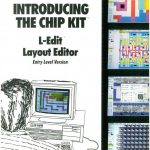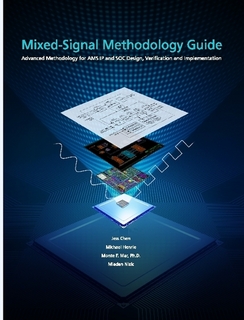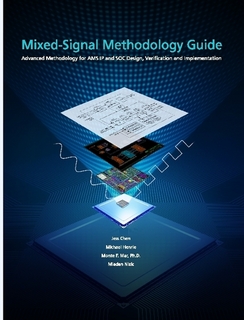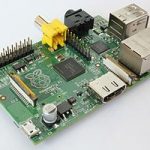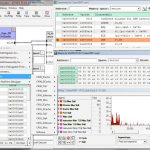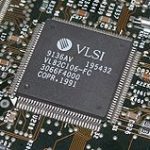Daniel Payne recently blogged some of the integration challenges facing Synopsys with their impending acquisition of SpringSoft. On my way back from San Diego last week I stopped by Tanner EDA to discuss an alternative tool flow for users who find themselves concerned about the Laker Custom Layout road map.
Design of the analog portion of a mixed-signal SoC is routinely cited as a bottleneck for getting SoC products to market. This is primarily attributed to the iterative and highly artistic nature of analog design; and the lack of analog design tools to keep up with the rate and pace of productivity tools for digital circuit design. Fortunately, there is a well-known, time-proven tool for analog and mixed-signal design that offers compelling features and functionality. What’s more – with several upcoming enhancements, this tool is very well suited to be a top choice for leading SoC designers who don’t have time to wait and see how the Synopsys Custom Designer / Laker Custom Layout integration is going to play out.
L-Editfrom Tanner EDAhas been around since 1987. It was the seminal EDA software tool offered by Tanner Research. John Tanner – a CalTech grad student and Carver Mead advisee, originally marketed L-Edit as “The Chip Kit” – a GUI-driven PC-based layout editor. Several of the core principles Dr. Tanner embraced when he first started the company continue to be cornerstones of Tanner EDA twenty-five years later:
Relentless pursuit of Productivity for Design Enablement
The tool suite from Tanner can be installed and configured in minutes. Users consistently cite their ability to go from installing the tools to having a qualified design for test chips in weeks. And we’re not talking about some vintage PLL or ADC that’s designed in 350 nanometer. Tanner has L-Edit users actively working at 28nm and 22nm on advanced technologies and IP for high-speed I/O and flash memory.
In addition to improving L-Edit organically, Tanner has embraced opportunities to add functionality and capability with partners. L-Edit added a powerful advanced device generator – HiPer DevGen– back in 2010. It automatically recognizes and generates common structures that are typically tedious and time-consuming; such as differential pairs, current mirrors, and resistor dividers. The core functionality was built out by an IC design services firm; and is now an add-on for L-Edit. More recently, Tanner has announced offeringsthat couple their tools with offerings from BDA, Aldec and Incentia. This is a great sign of a company that knows how to “stick to their knitting” – while also collaborating effectively to continue to meet their users’ needs.
Tanner L-Edit v16 (currently in Beta – due out by year-end) offers users the ability to work in Open Access; reading and writing design elements across workgroups and across tool platforms. Tanner EDA CTO Mass Sivilotti told me “Our migration to Open Access is the biggest single capability the company has taken on since launching L-Edit. This is a really big deal. We’ve been fortunate to have a strong community of beta testers and early adopters that have helped us to ensure v16 will deliver unprecedented interoperability and capability.”
Collaboration with leading foundriesfor certified PDKs has been a key focus area for Tanner; and it shows. With foundry-certified flows for Dongbu HiTek, TowerJazz and X-Fab and a robust roadmap, it’s clear that this is a priority. Greg Lebsack commented “Historically, many of Tanner EDA’s users had captive foundries or other means to maintain design kits. Over the past several years, we’ve seen an increasing interest by both the foundries and our users to offer certified PDKs and reference flows. It just makes sense from a productivity and design enablement standpoint.”
Maniacal focus on customer service and support
Tier II and Tier III EDA customers (companies that have more modest EDA budget than a Qualcomm or Samsung) often cite lackluster customer service from the “big three” EDA firms. This is understandable – as much of the time, attention and resource spent by big three EDA companies is directed towards acquiring and keeping large customers. Tanner EDA has many users in the Tier I accounts, but those users tend to be in smaller in research groups or advance process design teams. Their sweet spot has been Tier II and Tier III customers; and they’ve done a great job of serving that user base. One of the keys John Tanner attributes to this is having a core of the support and development teams co-located in Monrovia. “It makes a tremendous difference, says Dr. Tanner, when an FAE can literally walk down the hall and grab a development engineer to join in on a customer call.”
Features and functions that are “just what you want” – not “more than you need”
John Zuk, VP of Marketing and Business Strategy explained it to me this way: “Back in 1987, the company touted that L-Edit was built by VLSI designers for VLSI designers. Inherent in that practice has been the embracing of a very practical and disciplined approach to our product development. Thanks to very tight coupling with our user-base, we’ve maintained a keen understanding of what’s really necessary for designers and engineers to continue to drive innovation and productivity. We make sure the tools have essential features and we don’t load them up with capabilities that can be a distraction.”
While Tanner may have had a humble presence over this past quarter century, the quality of their tools and their company are proven by Tanner’s impressive customer set. A look at the selected customer stories on their website and the quotes in several of their datasheets reveal some compelling endorsements. From FLIR in image sensors, to Analog Bits in IP, to Knowles for MEMS microphones, to Torex for Power Management, Tanner maintains a very loyal user base.
The $100M question is: Will Tanner EDA pick up where SpringSoft Laker left off?


